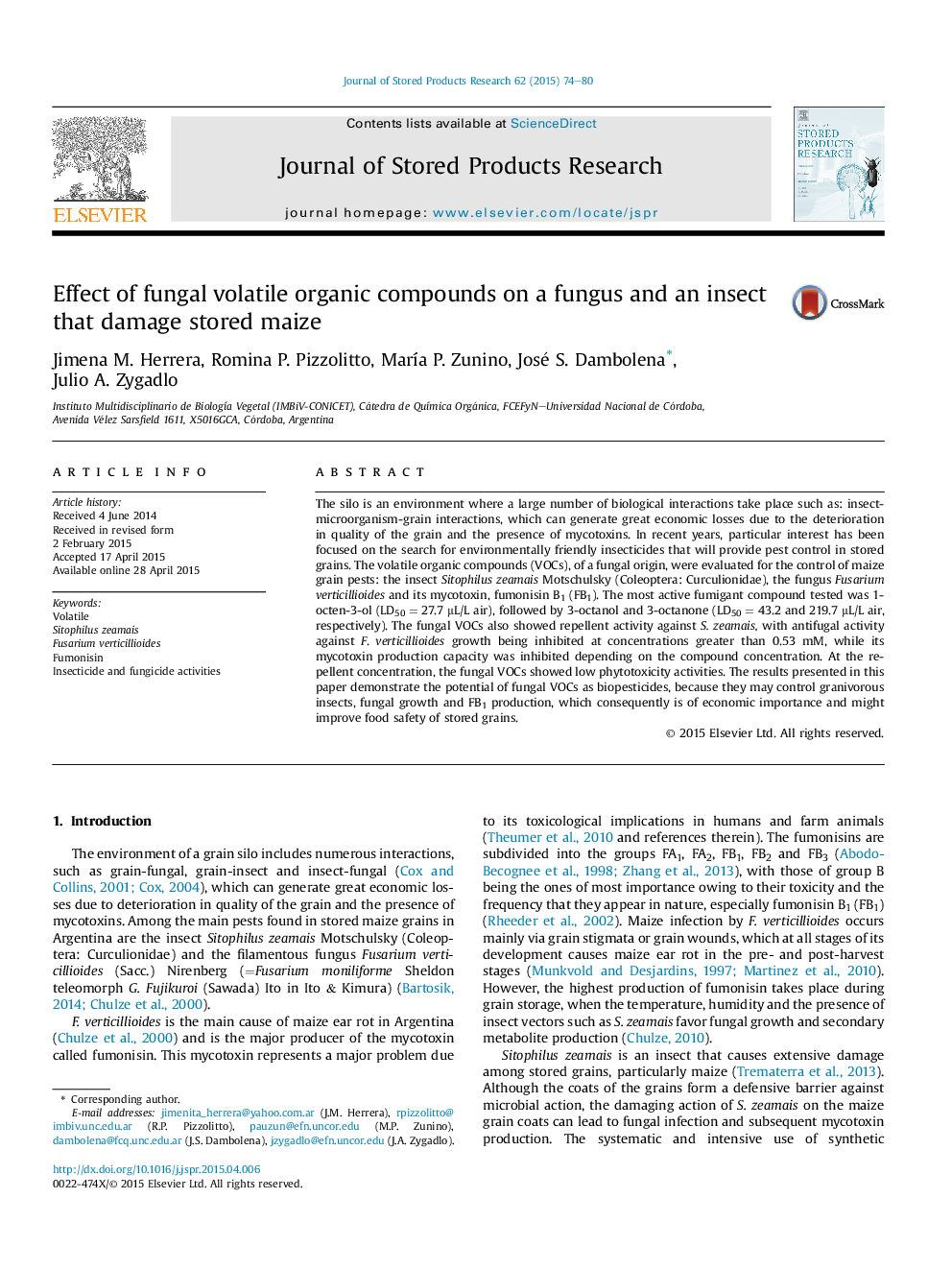| Article ID | Journal | Published Year | Pages | File Type |
|---|---|---|---|---|
| 4517053 | Journal of Stored Products Research | 2015 | 7 Pages |
•Fungal VOCs were evaluated for the control of an insect and a fungus.•1-octen-3-ol, the most active fumigant, followed by 3-octanol and 3-octanone.•The fungal VOCs also showed repellent activity against Sitophilus zeamais.•1-octen-3-ol inhibited Fusarium verticillioides growth and FB1 production.•Fungal VOCs as potential biopesticides, could improve food safety of stored grains.
The silo is an environment where a large number of biological interactions take place such as: insect-microorganism-grain interactions, which can generate great economic losses due to the deterioration in quality of the grain and the presence of mycotoxins. In recent years, particular interest has been focused on the search for environmentally friendly insecticides that will provide pest control in stored grains. The volatile organic compounds (VOCs), of a fungal origin, were evaluated for the control of maize grain pests: the insect Sitophilus zeamais Motschulsky (Coleoptera: Curculionidae), the fungus Fusarium verticillioides and its mycotoxin, fumonisin B1 (FB1). The most active fumigant compound tested was 1-octen-3-ol (LD50 = 27.7 μL/L air), followed by 3-octanol and 3-octanone (LD50 = 43.2 and 219.7 μL/L air, respectively). The fungal VOCs also showed repellent activity against S. zeamais, with antifugal activity against F. verticillioides growth being inhibited at concentrations greater than 0.53 mM, while its mycotoxin production capacity was inhibited depending on the compound concentration. At the repellent concentration, the fungal VOCs showed low phytotoxicity activities. The results presented in this paper demonstrate the potential of fungal VOCs as biopesticides, because they may control granivorous insects, fungal growth and FB1 production, which consequently is of economic importance and might improve food safety of stored grains.
